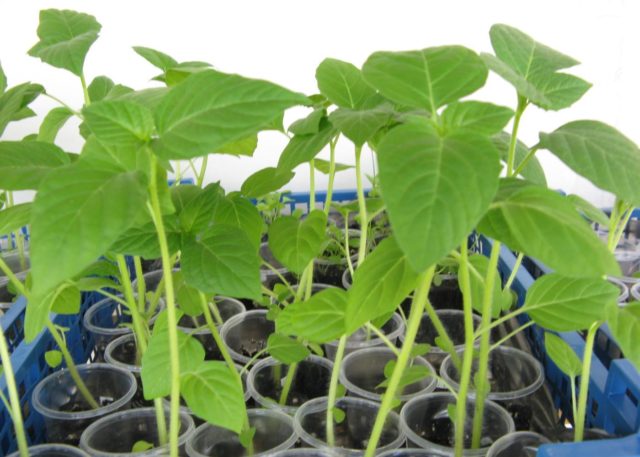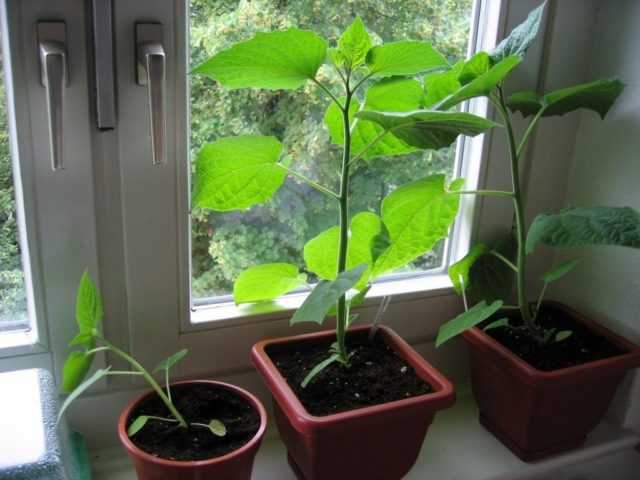Content
It is believed that physalis is a perennial plant, but in Russia it is better known as an annual plant, and its reproduction often occurs by self-sowing. Growing physalis from seeds at home does not contain any difficulties. Anyone who knows how to grow tomatoes or peppers can grow an exotic plant with its beautiful fruits that look like bright red lanterns.
Features of growing physalis from seeds at home
Despite the fact that physalis comes from sunny, warm places, it is an unpretentious plant in terms of climate. It can be grown at home in any region of Russia.
To do this, sowing is carried out in spring or autumn directly into open ground. You can start growing seedlings at home, and when the weather warms up, transplant the seedlings to the plot. But if there is no such area, then you can grow physalis in a pot on a windowsill or balcony. With proper care, this plant will grow, bloom and bear fruit.
Sowing time
In terms of ripening time, physalis is classified as mid-season. It produces its first fruits 110-115 days after planting the seeds in the spring for seedlings.
Seeds are planted in open ground in the spring, when it is warm and there will be no return frosts. In different regions of Russia, such weather occurs at different times. In the fall, seeds are planted in the ground on the assumption that frost has not yet arrived, but is about to come. The plant will have time to begin its growth, will not come to the surface and will remain in the ground throughout the winter.
Sowing in pots or boxes at home for growing seedlings should be carried out within a time frame designed to allow the plant to remain at home for at least 30 days before planting in open ground.
If the plant is grown for permanent use at home, then sowing is carried out in March with the onset of spring.
How to grow physalis at home
Physalis seedlings can be bought in the store, and when the weather warms up, plant it on the plot or in a pot if the plant will live at home. But it’s not difficult to grow this crop yourself at home. Physalis is unpretentious, frost-resistant, drought-resistant, and does not require special maintenance.
Selection and preparation of containers for planting
There are 2 main methods of growing at home: with picking and without picking in a permanent place.
If replanting is not expected in the future, then you need to prepare pots or boxes for the loggia, plant 2-3 seeds in them, so that later you can leave the strongest sprout. You can use peat tablets.
When planning a pick, prepare a large plastic or wooden box designed to hold all the seedlings.
Pots and planting boxes must have drainage.
Seed preparation
Physalis germinates quickly without special preparation.But if there is any doubt that dry seeds may not germinate in the soil or you want them to germinate 3-4 days after sowing, then they need to be prepared a little:
- Rinse, then soak for 20-30 minutes in a weak solution of potassium permanganate to disinfect.
- Rinse again, put the seeds between layers of wet cotton pads, gauze, napkins for their germination in a humid environment. Place in a warm place.
After 2-3 days they will begin to hatch. If you put dry seeds in the soil, their germination will be delayed for a week.
Soil preparation
For planting and growing at home, you can take purchased soil intended for tomatoes, peppers, eggplants or for decorative growing plants. It contains mineral fertilizers.
If you want the soil to be free of chemical mineral additives, you can prepare it yourself. To do this, you need to mix peat, humus, soil from the site and sand in a ratio of 4:2:2:1.
Before planting seeds, it is recommended to heat the prepared soil in the oven at a temperature of +700C for half an hour. There is no need to raise the temperature higher to preserve the beneficial properties of the earth.
Landing rules
There are no special rules for growing the crop. The procedure is the same as for any garden crops. After preparing the planting material, soil and container, proceed as follows:
- Place soil in a container and lightly moisten it.
- Make a depression of 1-2 cm, put the seeds there, and cover with soil.
- Pour warm water, cover with film and place in a warm place.
You don’t have to make holes for the planting material, but lay it out on the surface, sprinkling 1 cm of soil on top.Every day you need to ventilate the crops, removing the film. When sprouts begin to appear, the film must be removed and the container with seedlings placed in the sun.
Caring for physalis at home in a pot
At home, growing physalis in a pot produces a bush that, with the right care and, depending on the variety, can grow from 50 cm to 1 m in height. Therefore, the plant needs a garter. How and when to do it, you need to decide for yourself.
Physalis planting is usually not done, because cultivation is carried out to produce fruits. The more stems there are, the more flowers and fruit boxes it will have. In order for physalis to grow bushy, the tops of the shoots are pinched.
It is better to place the container on the south, east or west side. If there is not enough light, it is recommended to additionally turn on the phytolamp. The room must be ventilated regularly.
After watering, the soil in the pot must be loosened periodically. Physalis rarely suffers from insect pests at home, but it can suffer from late blight.
Watering and fertilizing
Physalis is considered a drought-resistant plant, but for its full cultivation it is necessary that the soil is not dry. Watering should be done regularly, about 1-2 times a week, and make sure that the water in the ground does not stagnate. For this purpose, drainage is provided.
Fertilizing with mineral complexes should be carried out 2 times a month immediately after picking and stop when the fruits ripen. You can use mineral sticks or granular standard fertilizer of the “Flower” type.
Dive
When growing seedlings at home, picking should be done when the first 2-3 true leaves appear on the sprouts.To do this you need:
- Prepare separate containers - plastic or paper cups, pots.
- Place fertile soil in them with the addition of complementary foods (1 tablespoon of mineral fertilizer per 5 kg of soil).
- Make a hole to accommodate the roots of the seedlings.
- Plant the seedlings by compacting the soil.
- Water and place in a warm, bright place.
If you plan to grow the plant at home in a pot or it has outgrown its capacity, then you will need to carry out a secondary picking. When the stem of the sprout becomes stronger, transplant it to a permanent place of residence in a pot selected for it.
Hardening
It is recommended to harden the seedlings 3 weeks before planting in open ground. To do this, you need to take the container with the sprouts out into the fresh air under direct sunlight - a balcony, loggia, veranda. This must be done by gradually increasing the residence time from several minutes to several hours.
When growing indoor physalis in a pot, it also needs to be hardened in the fresh air. For the summer season it can be placed on the loggia.
Transplantation into open ground
Planting seedlings in open ground is nothing special and is carried out in the same way as for other garden crops. It is advisable to choose a sunny place for growing, so that representatives of the nightshade family - tomatoes, potatoes, peppers - have not previously grown in this area. The penumbral side is also suitable.
Algorithm:
- Dig up the soil, adding wood ash if necessary (to reduce acidity).
- Dig holes for seedlings at a distance of 30-40 cm from each other.
- Plant seedlings in them, fill them with soil, compact them, and water them.
It should be taken into account that the root system of physalis grows greatly, so by autumn it can occupy a very large area and displace neighboring plants. It is recommended to fence the area with physalis on the ground with a solid barrier, dug half a meter into the ground, or plant it in a plastic container without a bottom.
Conclusion
Growing physalis from seeds at home is an activity that will bring pleasure to anyone who wants to do it themselves. There are no difficulties in the procedure, no large labor costs, and the result will be the beauty of decorative varieties of crops and the exotic taste of the fruits of edible physalis.
















This is the third year it has been growing on my site, as I understand it, this is physalis. I live in a cold climate. As I understand it, this is an ornamental physalis. The film is green, the fruits are reddish, from your description I understand that the decorative film should also be reddish. How to find out what is edible from what grows on me. I really want to know so as not to make a mistake, because I really love this fruit. Thank you